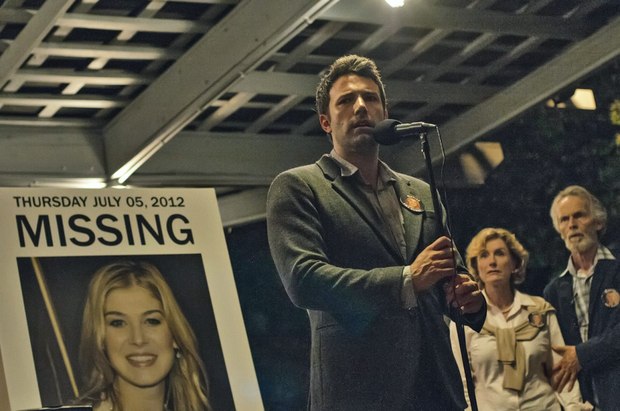Tight integration between Premiere Pro CC and After Effects CC allows multiple editors and VFX artists to work on the same project.
The postproduction team made the decision switch from Final Cut Pro and use Premiere Pro CC because of its tight integration between Premiere Pro CC and After Effects CC, which allowed multiple editors and VFX artists to work on the same project. And, Premiere Pro CC was able to play back 6K files in real time for VFX review.
As a director, Fincher has a reputation for pushing technology to the limit. To help realize his ambitious vision for Gone Girl, he shot the film with a RED Dragon camera in 6K and assembled a top-notch post-production team. Two-time Academy award winner Kirk Baxter, ACE, edited the film with help from Tyler Nelson, his long-time assistant editor. Peter Mavromates worked as postproduction supervisor, while Jeff Brue of Open Drives was the postproduction engineer.
After successfully cutting a Calvin Klein commercial using Premiere Pro CC, the team looked at what it would take to support the demands of a two-and-a-half hour feature film. Fincher’s team decided to use Adobe Premiere Pro CC and postproduction engineer Jeff Brue was tasked with designing a storage system that would enable Premiere Pro to work quickly and efficiently within a 6K feature film pipeline.
“Our goal was to get as many iterations as possible of the opticals and visual effects in a given period of time to make the story as good as we could,” Brue said. “The ask was for nothing less than perfection, which pushed us to do better. When it came down to it, Adobe Premiere Pro CC was faster than anything else on market. That speed meant more iterations, more time to work on a shot and more time to perfect an edit.”
Having worked on previous Fincher projects, Mavromates assumed the role of managing the pipeline, helping determine the post-production goals, and managing the visual effects work. Baxter worked on the edit, relying on assistant editor Tyler Nelson and others on the editorial team to navigate the technicalities of working on such a cutting-edge pipeline.
“Working with the Adobe engineers was probably the best development experience I’ve ever had,” Nelson said. “Everybody was in tune with what was going on and we always had this amazingly collaborative environment. It wasn’t just about making our movie the best movie it could be, we wanted to make every movie cut on Premiere Pro CC in the future the best movie it could be.”
Additionally, much of the visual effects work was done in-house, which allowed the team to work in parallel with the editing. As Baxter edited in Premiere Pro CC, Nelson worked on the shots in After Effects CC. Whenever Nelson saved a composition, it automatically updated in Baxter’s timeline thanks to Adobe Dynamic Link. This integrated and interactive workflow kept shots looking cleaner and eliminated distracting back-and-forth interactions so Fincher and Baxter could focus on the story as it evolved in the edit bay.
Source: Adobe Systems








